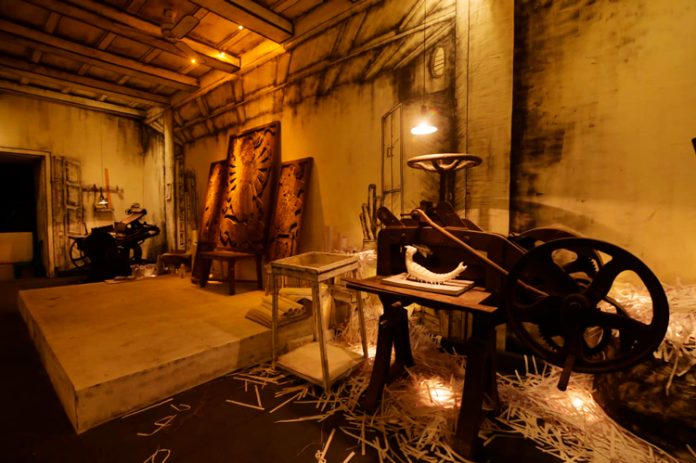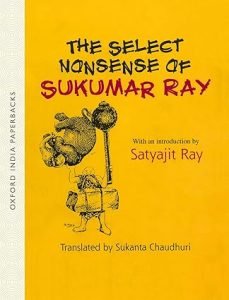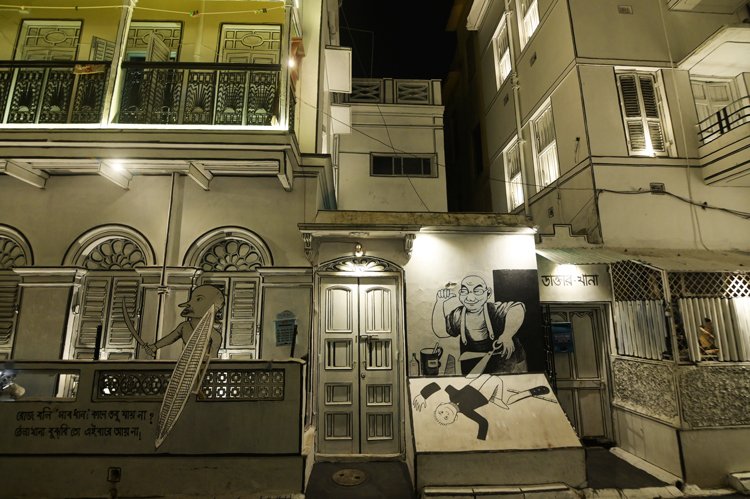
Abol Tabol, translated as ‘the weird and the absurd’ in English, is a century-old Bengali literary classic by Sukumar Ray, father of celebrated Bengali filmmaker Satyajit Ray. Published on 19 September 1923 by U Ray & Sons, a mere 10 days after Sukumar Ray passed away at 36, the collection of nonsense verse criticized the behavior that emerged out of the British colonial influence on 20th century Bengal, the headquarters of the English East India Company. The book has never been out of print ever since it was first published in 1923.

Sukanta Chaudhuri, who first translated 44 of the 52 poetry pieces from Bengali to English in the book The Select Nonsense of Sukumar Ray (1987) for Oxford India, with an introduction by Ray’s son Satyajit, told with Indian Printer & Publisher, “Abol Tabol is not just a book that Bengalis read. It has become hard-wired into the way we think and live. It has contributed an improbable number of words and phrases to the Bengali language. More importantly, it has come to shape the way we think. It is the high end of a major line of humor, wit and whimsy in Bengali literature.”
The book of nonsensical verse, which has been an integral part of every Bengali’s childhood, has been often compared to Jabberwocky (1871) by Lewis Caroll and A Book of Nonsense (1846) by artist Edward Lear – the first a nonsense poem and the other a renowned collection of nonsense verse and limericks.
The Nabin Palli Durga Puja Committee in Hatibagan, North Kolkata, recreated the world of Abol Tabol on its centenary and the 100th death anniversary of the celebrated writer through caricature sketches and nonsensical verses, limericks and talking animals.

Incidentally, it was also the 90th year of Nabin Palli Durga Puja celebrations in the neighborhood that stretches from Bidhan Sarani to Hatibagan on Nalin Sarkar Street. The entire neighborhood transformed into a world of Abol Tabol with the look of a two-dimensional comic book. The Nabin Palli Durga Puja painted all the houses white while black outlines were incorporated to create the illusion of French louvers, glass-painted door arches, balustrades, and columns. This aligned with the theme of the book as the pages of the original with illustrations were printed in black and white.
The characters from poems Bombagorer Raja and Hanukumkho Hyangla such as Gangaram, Ramgorurer Channa, Kumropatash, Alladi, Tyansh Goru, Katukutu Boro and Pagla Jogai stared at people from building facades and balconies, along with some accompanying epic verses from Abol Tabol. The entire setup recreated rhymes, scenes, and nonsense verses from Abol Tabol while the ceiling was wrapped with fabrics resembling book pages from the celebrated work.
Dipta Ghosh, chief organizer of the Nabin Palli Durga Puja Committee, said the motive and inspiration behind the pandal came from Abol Tabol, which completed 100 years of its publication in 2023.
The committee, with the help of designer Anirban Das and his team of 40 artists, designed and depicted almost all the characters of the book through wall paintings. The Puja pandal was a replica of the press named U Ray & Sons from where the first copy of Abol Tabol was published, Ghosh said, adding they did a mix of visual art and performing art. In performing art, they selected two poems from Abol Tabol such as Narod Narod and Larai Khyapa. In addition, they presented some live and popular characters from Abol Tabol such as Kumropatash and Alladi, who interacted with the spectators directly.
Tradition even treats the goddess Durga with easy intimacy and rough folk humor, so it’s hardly surprising that Abol Tabol provided the theme of a Durga Puja last year, and that the houses of an entire neighborhood were available for the cause, Chaudhari said.
“Though it’s nonsense rhyme, this is a sensible and must-read book. This book and the author must be in every Bengali’s mind and soul in this 20th century. He died at the age of 36 when his son Satyajit Ray was just two years old. Though he was a double honors graduate in physics and chemistry, he dedicated his life to literature,” Ghosh said. While designing the Abol Tabol-themed pandal, they had three points in mind – to encourage everyone, including teenagers, to read the book, to rethink Sukumar Ray and his creations, and to keep him alive within us for many many years to come, he added.
Neighboring houses were included through wall paintings to increase its expanse and create a total ambiance, Das said, adding the popularity of Sukumar Roy and Abol Tabol is unquestionable among Bengalis, the proof being the influx of people and literature lovers during the puja – from common people to celebrities, everyone appreciated this idea. “The popular characters of Abol Tabol, who occupy a huge portion of our childhood memories and are very familiar to us, were chosen for the theme,” he said, adding the book’s humor and satire on social inequality and corruption were reflected to some extent within the theme.
“The response was immense. We didn’t expect and imagine this project will create history and Sukumar Ray will be remembered by all spectators and literature enthusiasts even after 100 years after his death,” Ghosh said. “We created Tyansh Goru, Bombagorer, and many places and objects of Abol Tabol in addition to wall paintings and performing art, and these were highly appreciated by the spectators.”

The Ray family used to bring out the children’s magazine Sandesh and had a long association with the printing press. To highlight this aspect, an idol of Goddess Durga was placed in a compound at the end of the lane along with an old-style printing press from Medinipur. The press was recreated by sourcing old Bengali printing types and a block of wood used in vintage printing presses. The planning for the Durga Puja pandal started in April 2023, right after Noboborsho – the Bengali New Year, Ghosh informed Indian Printer & Publisher.
The Durga Puja pandal recreated Ray’s ancestral home and publishing house U Ray & Sons at 100, Garpar Road, with the printing press on the ground floor. The bust of Sukumar Ray, which was a part of the Durga Puja pandal, has been permanently established in the locality with the help of councilor Atin Ghosh. “This decision was taken unanimously by all committee members to pay homage to this great poet for future years to come,” Ghosh said.
The Nabin Palli Durga Puja Committee won 40 plus Sharad Samman (prizes for best Durga Puja Pandals) in 2023, including Asian Paints Sharad Samman, Berger Priyo Pujo, Pratidin Pujo Perfect, Ananda Bazar online, The Telegraph TTIS – Judges Choice Award and others.
“Street art is always connected to people as it creates awareness and stays for long. It hammers the brain to think again and again. We wanted to draw the attention of the community through the wall paintings of Abol Tabol and Sukumar Ray so that they stay long in everybody’s mind,” Ghosh said.
Street art is often made to represent an idea or message to the viewers, he said, adding, street artists must take a popular subject and work on it. It encourages community engagement and involvement, he shared.
“Street art is based on familiar everyday environments. The walls of the houses, the street lamp post, or the corner tea shop become unrecognizable by the magic of the artist’s imagination. Residents of the area and even passers-by easily become part of this art. “No need to isolate yourself and become an art connoisseur. That is how street art connects the human mind with the artist’s viewpoint,” Das said.
The puja pandal of Nabin Palli reminds the viewers of Sukumar Ray to date, Das said, adding, generally street art is based on local culture and languages. It helps to remind and recognize the forgotten literature and cultural strokes of the local language most easily, he concluded.

















